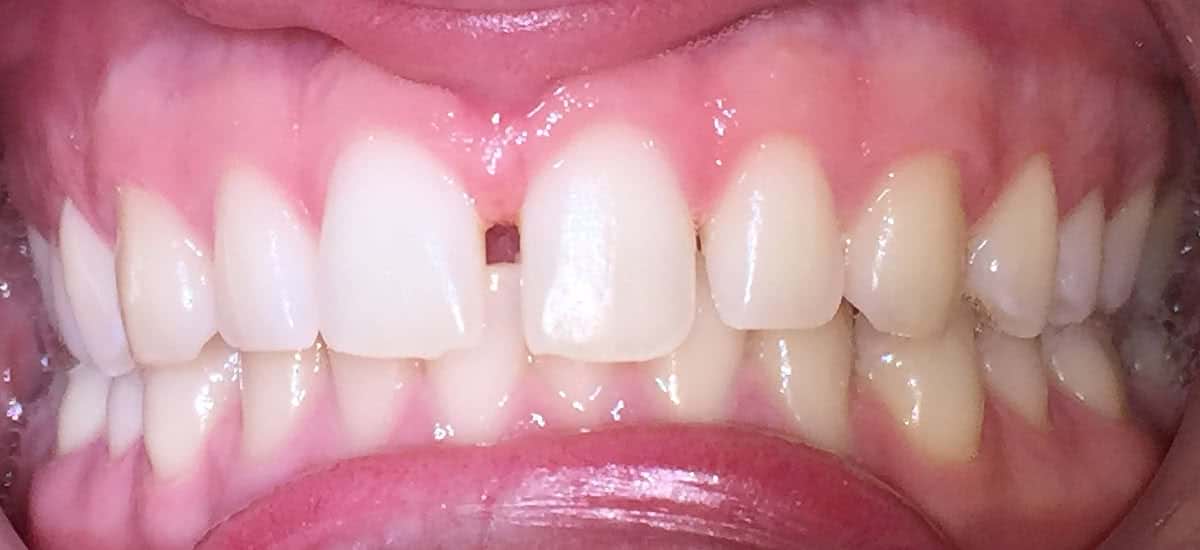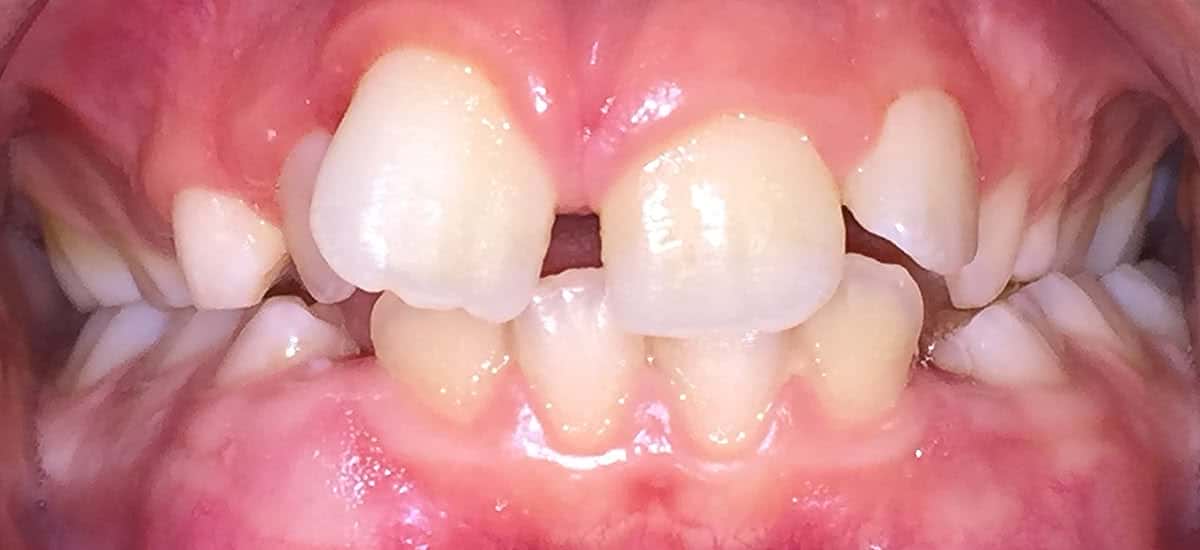Introduction
Spacing simply refers to where there are gaps between the teeth (not caused by missing teeth). It's also referred to as 'gapped teeth' and the dental term for one of these gaps is a 'diastema'. See also crowded teeth.
Tooth spacing is fairly common with baby teeth and with most babies any gap between the upper front teeth will often close naturally by the twelve-month mark. Similarly, as adult teeth come through, any initial gaps will often close naturally as well.
Causes
Most spacing issues are inherited (i.e. genetic) and caused by a size discrepancy between the upper and lower jawbones and / or the size of the teeth. Teeth that are too large for a normal sized or smaller jawbone will cause crowding, and smaller teeth on a normal sized or larger jawbone cause spacing. Other factors which contribute to spacing include…
- Missing or extra teeth – prior to eruption of the teeth, there may be one or more extra (or fewer) tooth in the jawbone, either adult and/or baby teeth.
- Misshapen teeth.
- Internal tissue structure in mouth – there are two folds of tissue in the mouth the lingual frenulum which attaches the tongue to the floor of the mouth and a similar smaller fold called the frenum which attaches the upper lip to the gums between the two front teeth. If the lingual frenulum is shorter than normal it causes tongue tie which stops the tongue from sticking out past the lips, plus it can cause a gap to appear between the two lower front teeth. Similarly, the frenum, if it is slightly larger, or attaches lower down on the gum, can cause a gap between the two (upper) front teeth.
- Thumb sucking / reverse swallowing (also called 'tongue thrust') / tooth grinding or clenching ('bruxism') – these can over time also have the effect of pushing upper teeth to the front of the mouth and create gaps.
- Chronic periodontal disease.
Some people may feel self-conscious if they have spacing of their teeth and may not be inclined to smile as a result. However, tooth spacing while the adult teeth are coming through can sometimes not leave room for other teeth to come through, creating crowding or crooked teeth. This in turn may cause problems with the bite. Any abnormality of the alignment of the teeth, whether crowding or spacing, can also result in…
- Greater risk of tooth decay / gum disease (as toothbrushing is more difficult).
- Frequent biting of the tongue and cheeks.
- Risk of wearing / chipping of teeth.
- Speech problems (e.g. lisp).
- Sleep apnoea / snoring (an abnormal bite forces breathing through the mouth rather than the nose).
Treatment
Tooth spacing is generally treated using one or more of the following approaches…
- Braces – the most common type of treatment for tooth spacing.
- Bridges – for more severe spacing.
- Crowns – specifically for where lateral incisors are too small.
- Implants – for more severe spacing.
- Partial dentures – for more severe spacing.
- Veneers – specifically for where lateral incisors are too small.
In cases where periodontal disease is present, this must be treated before one or more of these approaches are used to align the teeth correctly. In rare cases, a frenectomy (surgical removal of the frenum) may be recommended.






